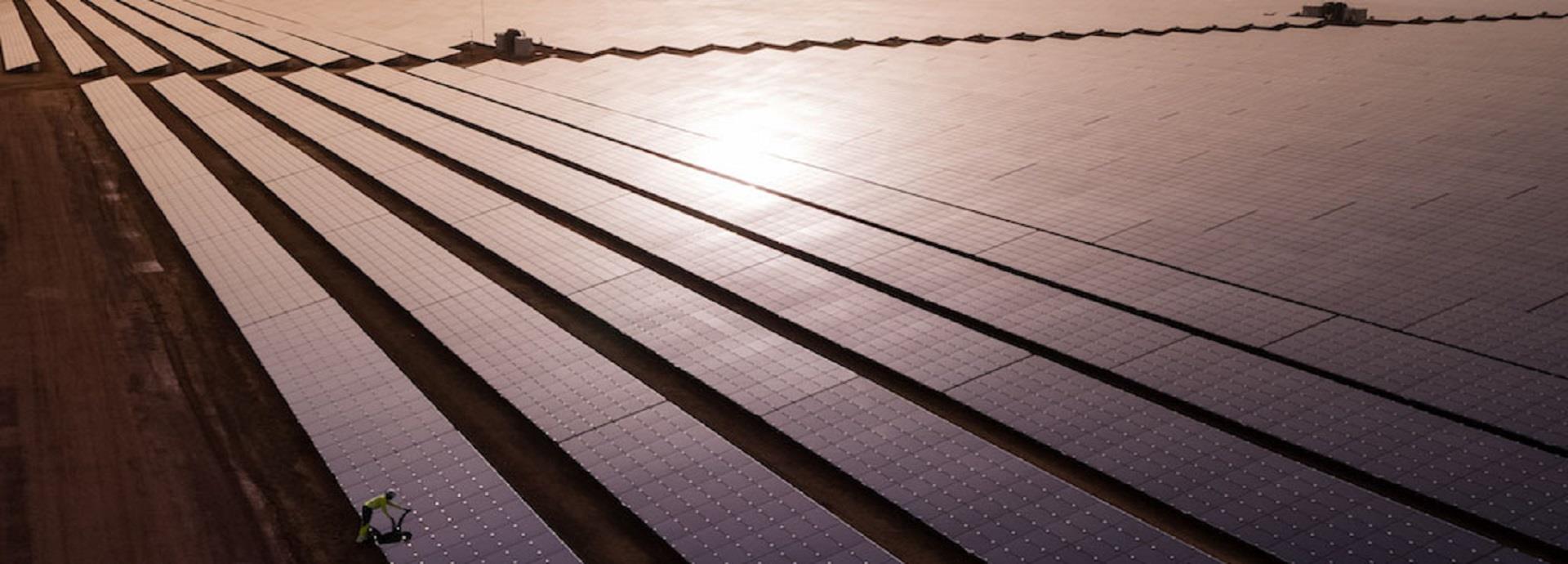

While wind and solar power are considered game changers for the energy market, their intermittent nature has always been a problem. Hybrid plants that use conventional power-generation methods are one sure-fire way to ensure the stability of power supply. But even here, there is potential for improvement.
The use of solar and wind power has matured over the years with costs associated with such renewable sources of energy becoming much cheaper.
According to the U.S. Energy Information Administration (EIA), in 2015, around 12% of world marketed (bought and sold) energy consumption came from renewable sources such as biomass, geothermal, hydropower, solar, and wind which will increase to 17% by 2040.
Renewable energy has clearly galvanised the energy market with the numbers speaking for themselves. That is, however, until nature decides to be fickle.
“We have started seeing a growing amount of intense tropical storms, flooding, heat waves, drought, forest fires, and coastal inundation. The economic losses have tripled in the past 30 years. There is an urgent need to mitigate climate change, as well as to adapt to it,” says Petteri Taalas, Secretary-General of the World Meteorological Organisation.
The effects of climate change were already visible in the summer of 2018 in Europe, with a period of extreme heat and sun, and no wind. Something wind energy producers in the region were ill prepared for.
“Most renewable systems today are not smart,” says Luke Witmer, Lead Research Engineer at Greensmith Energy, a Wärtsilä company, tasked with adding intelligence to the company’s utility control systems. “In fact, they are quite basic. They either generate power when the wind blows or when the sun shines, or they don’t.”
Come rain or shine
How do energy producers ensure that power supply is stable in the face of such conditions? The ability to adapt and innovate is a start. “I don’t suppose wind farms in Europe were very happy this summer. But as a systems operator, we had to make sure there was enough energy at all times and at a right price. In my opinion, the key thing here was flexibility and agility,” says Pekka Tolonen, Director, Solar, Wärtsilä.
For a turnkey energy infrastructure supplier like Wärtsilä, the solution is to understand the market and play assets off each other in the most profitable way. According to the experts, the ideal energy utility setup is a system that is based on solar and wind, as they are the cheapest, and supplemented with flexible thermal power generation and energy storage.
This system can then operate as an independent asset in the power grid, balancing out the intermittency of renewable generation, or alternatively, be integrated with renewables as hybrid plants. But, even for this ideal system, predicting the future can be a challenge.
“We’ve only reached the tip of the iceberg where we are just beginning to optimise all these parameters. We are at the edge of the data space that our society’s climate models operate in. There are often no precedents that our systems can go by to predict windless summers or sunnier winters,” says Witmer.
That’s not all. Market prices can also be as volatile as the weather and no one can predict the best way to run a hybrid plant consisting of solar, wind, generator and battery assets as each of them has completely different operational parameters.
Building a near-perfect system
However, there is hope. Companies like Greensmith Energy are actively working on solutions that use statistical models, artificial intelligence (AI) and forecasting to solve this problem.
“We are seeing more intelligent and predictive systems that can react when exposed to market forces like high or low demands for energy,” explains Witmer. “Our software is solving an optimisation problem where the objective is to maximise revenue, given the constraints of the weather being advantageous to power generation or not.”
Not just generation, storage and getting the energy mix right is also part of solving the problem. “For a utility system planner, the way to solve this is to know when exactly to delve into stored battery power, if it exists, or when to ramp up or ramp down fossil fuel or natural gas-powered generators,” adds Witmer. “Consider also that these generators sometimes take hours to start-up and stop, yet electricity prices spike up or down depending on supply and demand in a window of minutes.”
Part of the solution is to develop combustion engines as Wärtsilä has done, that can go from cold to full power in minutes or use stored battery power that can be tapped instantaneously, if and when the sun doesn’t shine.
Greensmith Energy’s predictive systems can also help in extending the life of these batteries, preventing huge so-called ‘non-linear’ lifecycle costs (wear and tear). “A utility can maximise its revenue by charging and discharging its batteries. But doing this can kill a battery in as little time as three years,” says Witmer. “Battery degradation has to be calculated into our financial and operational models to achieve the twenty-year lifecycle that some projects require.”
“To be fully prepared for the unknown requires building multiple levels of flexibility into our systems,” says Witmer. “So, for now, for these variables that are beyond control, we are dependent on optimisation hacks that run these hybrid plants in the most agile way possible to keep everything under control at all circumstances.”
AI technology is advancing by leaps and bounds, and with companies like Greensmith Energy continuing to develop intelligent and predictive systems, the perfect energy solution is not far off the horizon.
